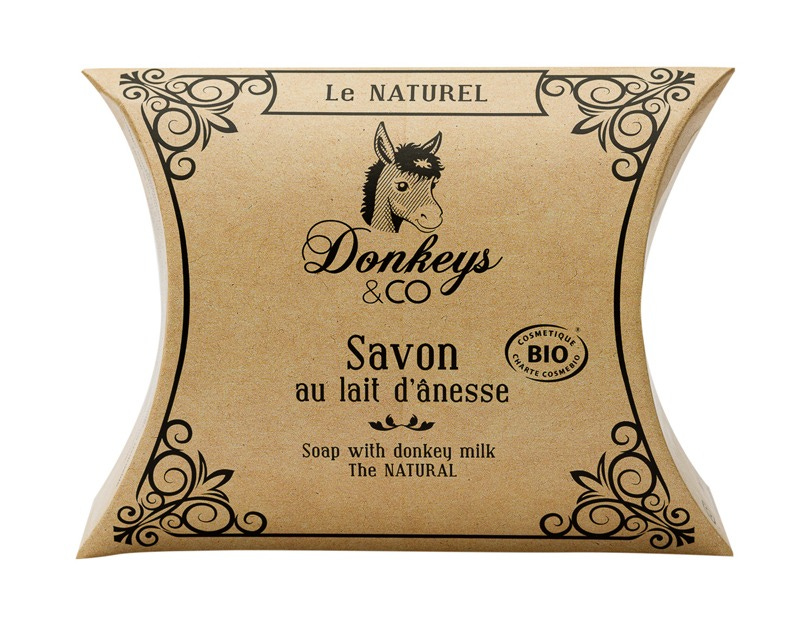The 7 Things My French Acupuncturist Recommends
Nettle tea, zinc spray, donkey milk soap, and an "immortelle" oil
One day a while back, I was out for lunch with a group of friends, a farewell for one who was moving to Portugal, an increasingly popular (maybe the most popular) destination for Americans looking to flee for Europe.
It was one of those perfect late spring days in Provence, not too hot, with a soft breeze. A French friend arrived and she was glowing. “You look amazing!” we all exclaimed. “Merci,” she said, with a small smile. “I just came from acculift.”
Acculift?
I’d never heard of it. She went on to explain it was acupuncture to tone and lift the face. One by one, the other women at the table piped up that they too had visited this same acupuncturist. I was intrigued. After lunch, I sent her a message and booked an appointment.
That was two years ago, and I still see Nathalie Zhao Sollier once a month. I had to shift from cosmetic treatments to traditional acupuncture when I was diagnosed with breast cancer, and I credit her with helping me manage the side effects of chemo. I’m pretty sure she’s one of the reasons I was able to keep lifting weights, hiking, and swimming throughout treatment.
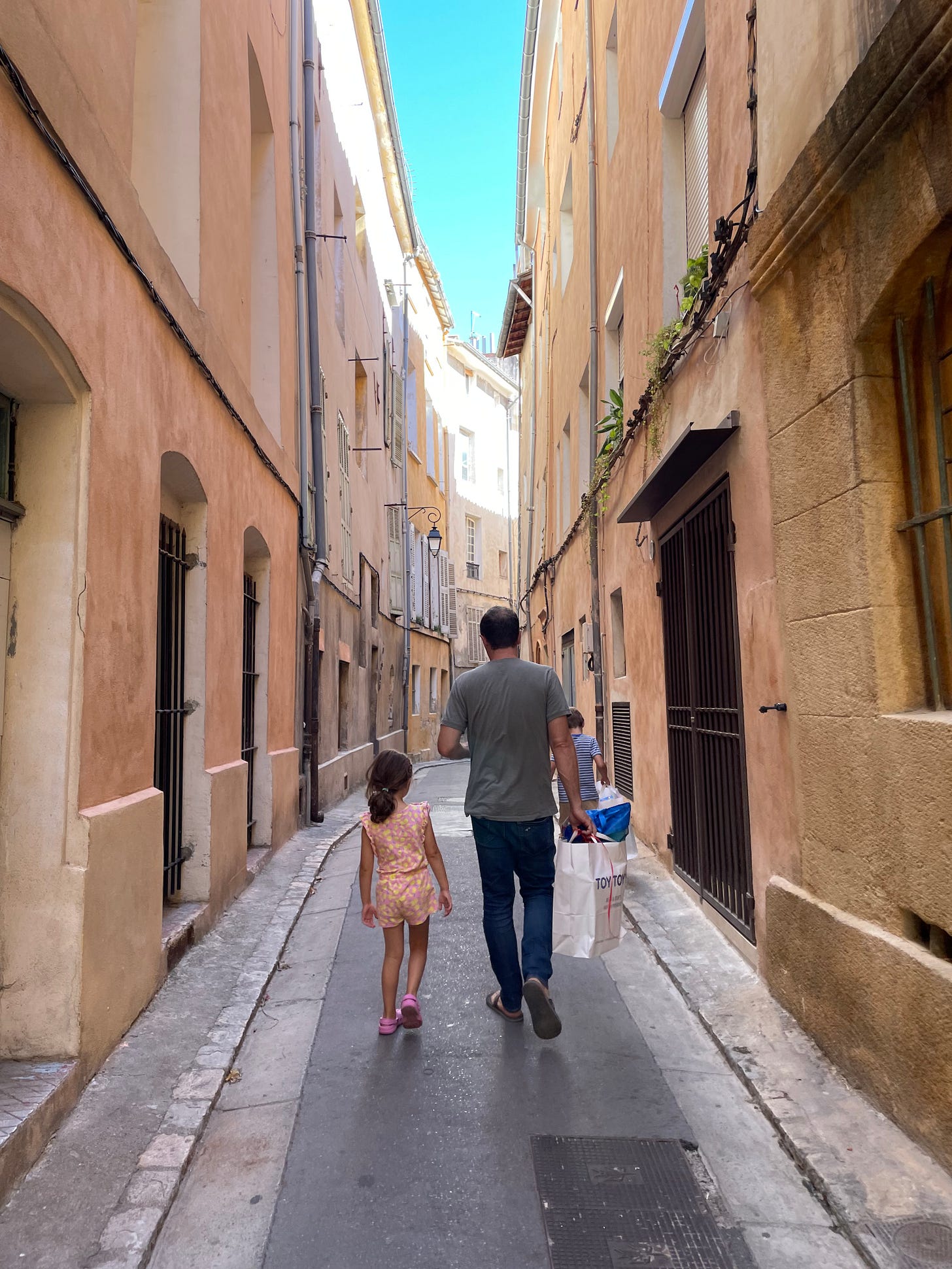
Each session starts off with me going over all that’s been ailing me since I last saw her. While I’m talking, she’s furiously scribbling notes in a notebook. Like a mathematician solving an equation, she mutters various numbers and letters under her breath, connecting invisible dots with her pen. We then settle on what she’ll work on for the session. But before we start, she almost always has a recommendation or two for me. These aren’t tips you’ll find on WebMD, and they nearly always surprise me.
Watermelon
After a chemo session I’d inevitably tell Nathalie I was tired and she’d answer “Your body needs sugar, for energy.” She’d recommend watermelon (either eating it or drinking the juice), which, according to her, cleans the liver and hydrates the body. Watermelon, cut into cubes and cold from the fridge, was particularly welcome during the long months of treatment, which left me feeling hot most of the time (particularly in my hands and feet).
Chemo is yang energy, “fire,” she’d say.
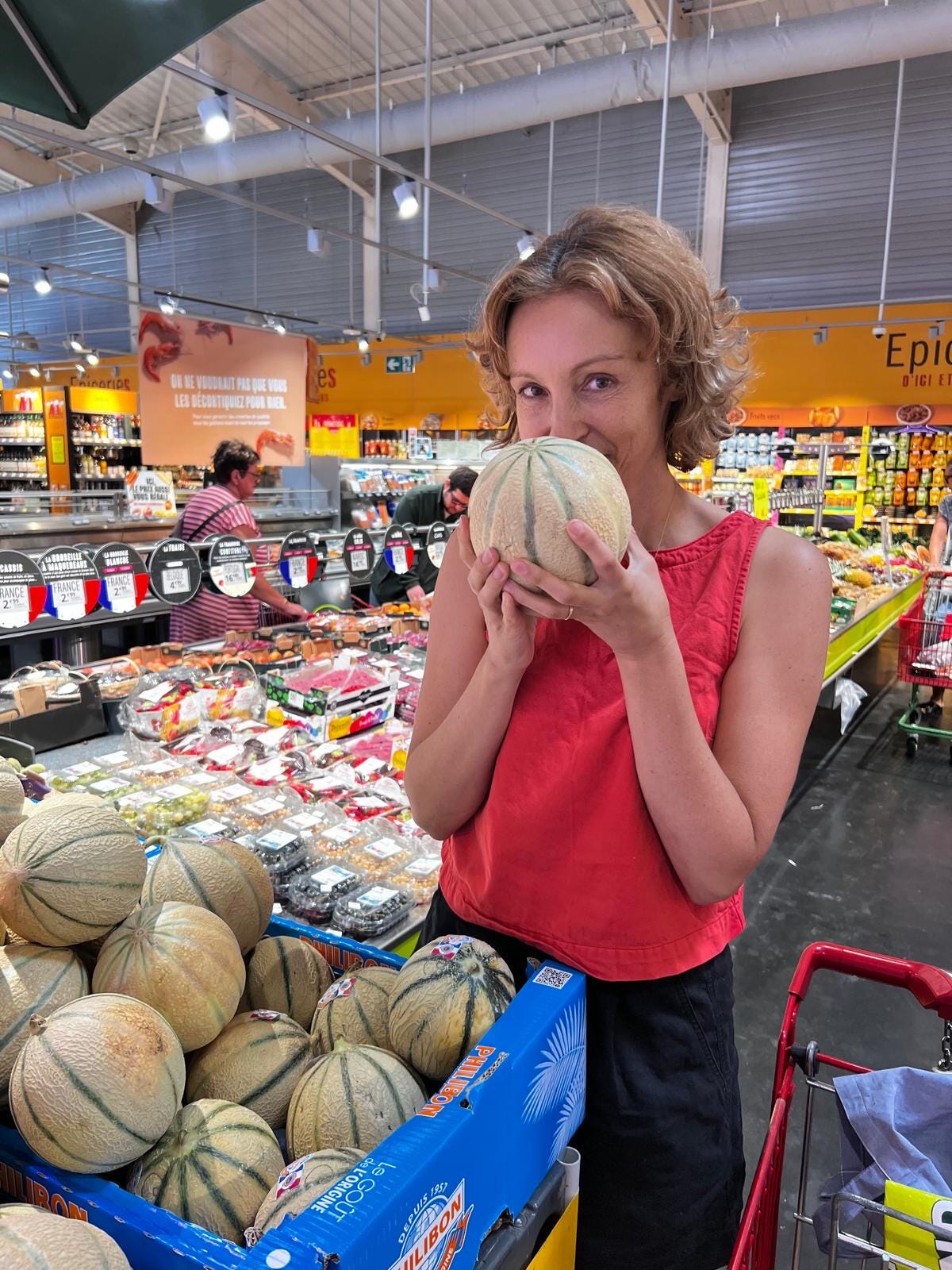
In Traditional Chinese Medicine (TCM), watermelon is considered a “cooling” food. It clears heat, can help you pee, and supports the bladder/kidneys. Other benefits of watermelon:
It has a high water content (~92%), so it’s a hydration powerhouse
Contains antioxidants like lycopene and vitamin C, which help reduce oxidative stress (when your body has too many free radicals and not enough antioxidants).
You can either eat the fruit or blend it up and drink it. Both are delicious!
She also recommends pineapple, which is also considered cooling, and can help with bloating and sluggish digestion. I love the taste of pineapple juice and luckily you can find it at most French supermarkets (I know Trader Joe’s in the US sells cans and cartons of the stuff). One of my favorite smoothies combines pineapple juice, frozen avocado, frozen mango, and coconut milk.
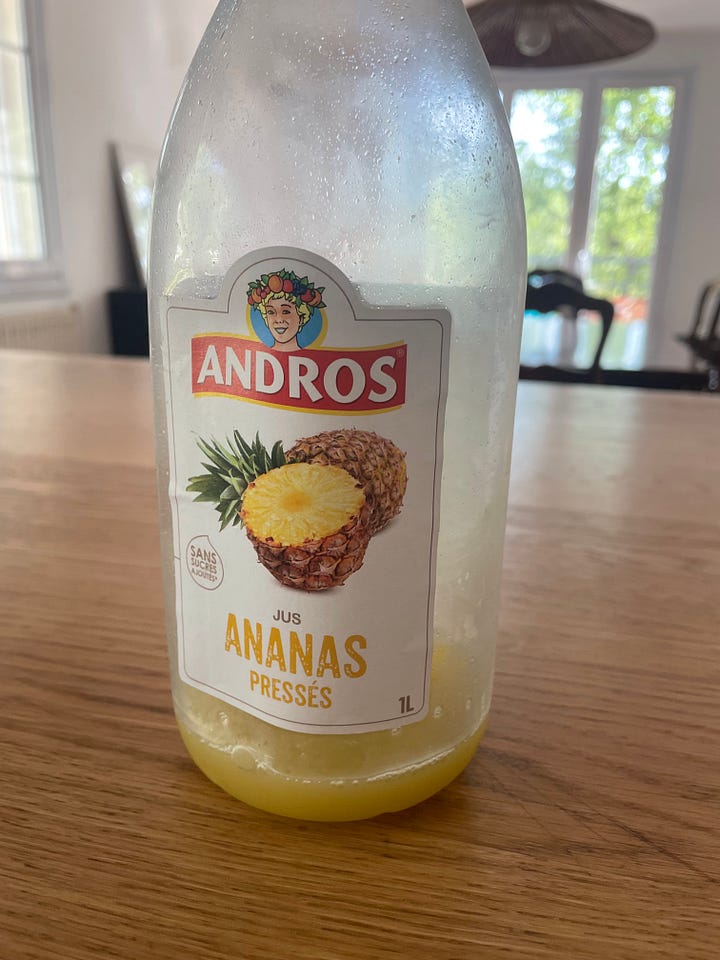
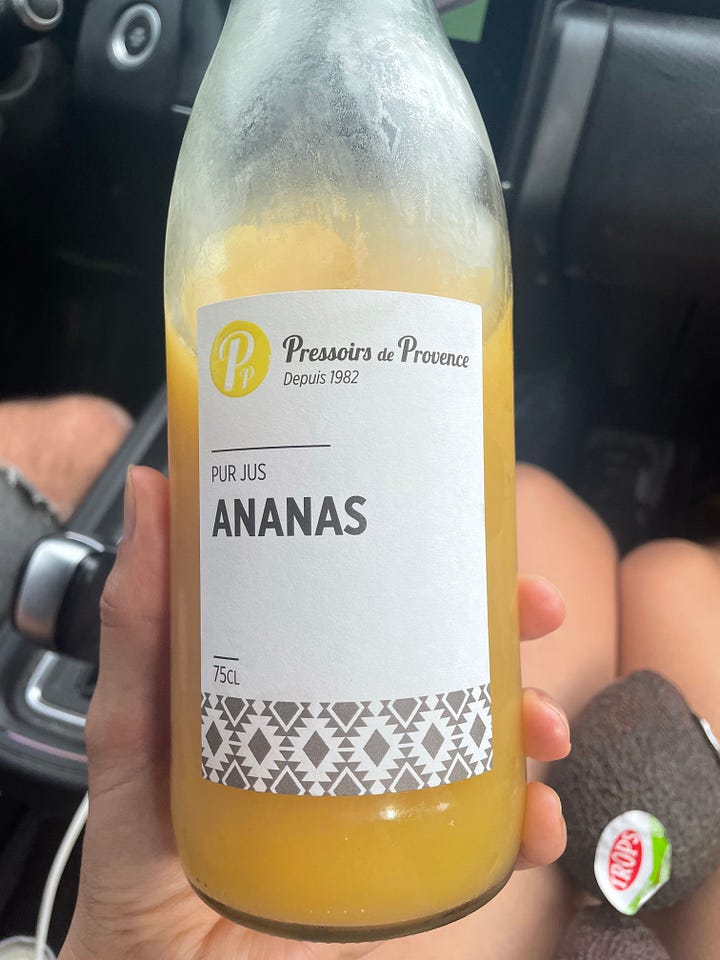
Nettle Tea (Tisane d’Ortie)
In the winter, I complained to Nathalie about sore knees, especially when I crouched down and stood back up. She recommended nettle tea (tisane d’ortie). She explained that, like pineapple, it helps “drain dampness” from the body, the kind of sluggish, heavy feeling that shows up as joint pain, brain fog, or migraines when the weather turns humid. Modern research backs this up too: nettle has natural diuretic and anti-inflammatory properties, and it’s packed with nutrients like vitamins A, C, K, and B, plus minerals like iron, calcium, magnesium, and potassium.
So straight after my appointment I headed over to Onatera, which bills itself as a holistic health store, and bought the brand Nathalie had recommended. I started drinking a cup a day and I do think it helped (or maybe the humidity had simply passed!). It tastes a bit grassy and nutty. I don’t mind it but you can add lemon and honey to improve the taste.
Rose Water
One morning I walked into her office and I was immediately struck by a subtly sweet, floral smell. It was rose water. She had simply decanted some into a spray bottle and spritzed the room. The sensation was uplifting and soothing. Rose water has traditionally been used across the Middle East and North Africa, both in food and for its therapeutic properties. When buying rose water, be sure to choose one made the traditional way, by steam-distilling fresh rose petals. That process extracts both the essential oils and the hydrosol (the fragrant water), which gives true rose water its delicate floral scent.
The ingredients list should say Rosa damascena (or another rose variety) and water. Nothing else. Some may also include a preservative like potassium sorbate, but avoid products with added fragrance, alcohol, or synthetic dyes. Authentic rose water often comes from regions with a history of rose distillation like Morocco, Iran, Turkey, or Bulgaria’s Rose Valley. A quick way to check: look for labels like 100% pure rose water or steam-distilled rose hydrosol.
Donkey Milk Soap (savon au lait d’ânesse)
My daughter had been suffering from eczema around her eyes and on her legs. Nathalie recommended donkey milk soap (lait d’ânesse). I had never heard of it, but learnt that it’s commonly used in France and I’ve since seen it at every pharmacy here. It’s naturally rich in vitamins A, D, and E, plus fatty acids and minerals that can help nourish and calm sensitive skin.
Because it’s so gentle and moisturizing, it’s often recommended for dry skin conditions like eczema, psoriasis, or simple irritation. I bought a bar for 3 euros and I do find my skin is softer after using it. I wasn’t consistent in using it for my daughter’s eczema, so I can’t speak to its efficacy there.
Royal Jelly
Royal jelly is the creamy substance worker bees produce to feed the queen bee throughout her life, and it’s rich in B vitamins, amino acids (the building blocks of protein), fatty acids, and antioxidants. You see it displayed in French pharmacies come September, marketed as an immune booster to help protect against illness during the colder months. Royal jelly may support the immune system in several ways: its antioxidants help protect cells from damage, while unique proteins have antibacterial and antifungal effects.
It also calms inflammation and may stimulate white blood cells, helping the body respond more effectively to infections. As for dosage directions, I plan to start taking it this fall, and I don’t know yet if I’ll choose fresh royal jelly (a creamy paste) or capsules. I see this fresh version at a lot of pharmacies, and the recommended dose is 1g taken in the morning on an empty stomach.
Helichryse
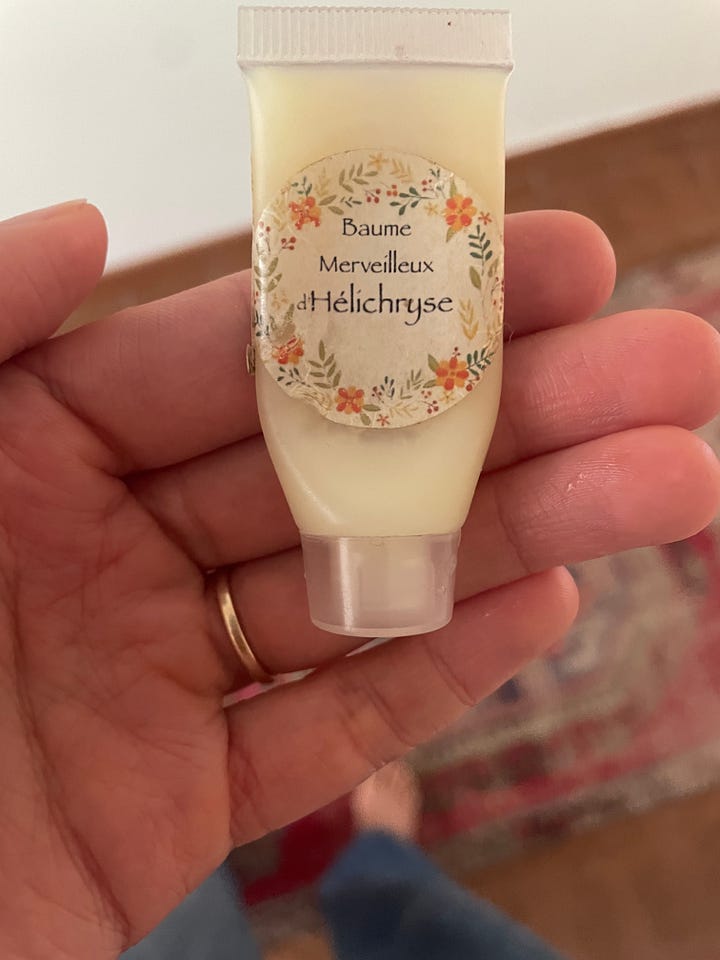

My acupuncturist also makes her own cream from helichrysum flowers, known as immortelle or “gold of the sun.” The cream feels more like a thick balm because it’s made from an oil macerate (flowers steeped in oil) blended with beeswax, rather than essential oils. According to Nathalie, helichrysum can ease joint and muscle pain and improve circulation. It’s also good for the skin and may help fade scars and stretch marks, reduce bruising, and calm redness or irritation. In winter I even use it as a facial moisturizer and as the oil base when I gua sha.
Zinc Spray
I’ve taken zinc tablets in the past for immunity, but zinc spray is new to me. It apparently supports the hair follicle’s oil glands, helps with tissue repair, and keeps the scalp balanced. A deficiency can cause thinning or hair loss, so using a topical spray gives the follicles a direct boost. I’d probably pick this one or this one.
That’s it! Have you tried any of the above? And if you’re in Aix-en-Provence, you can book a session with Nathalie here.




